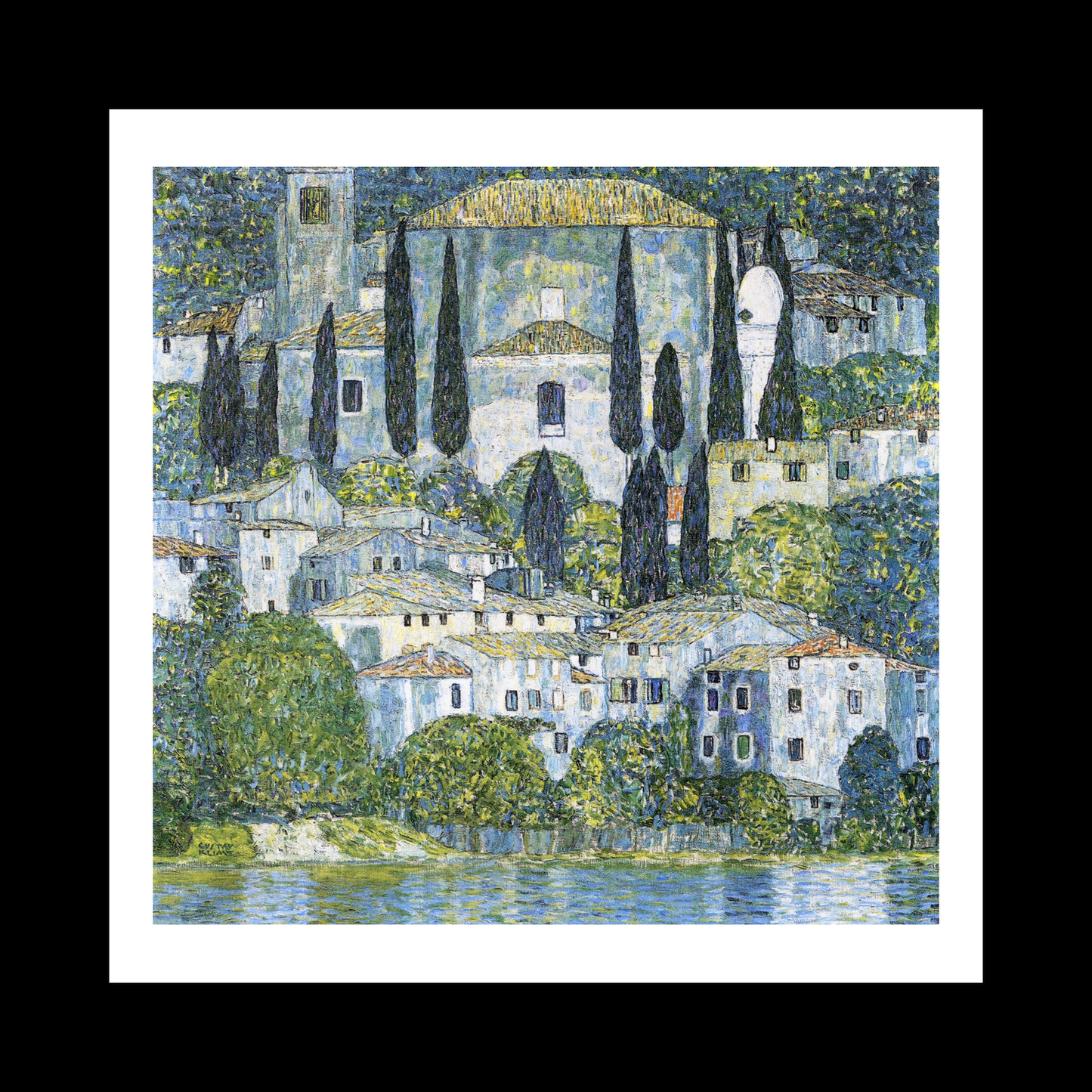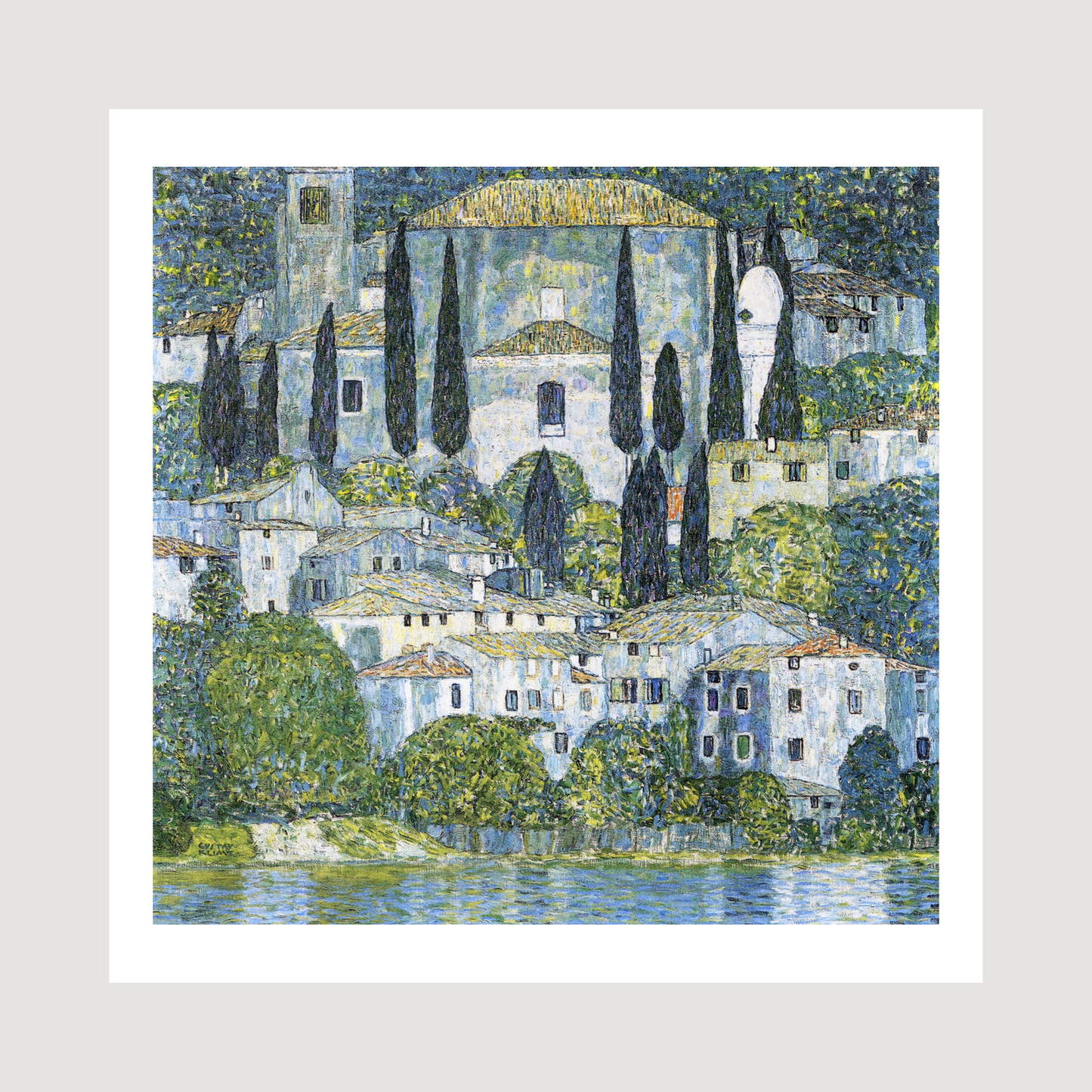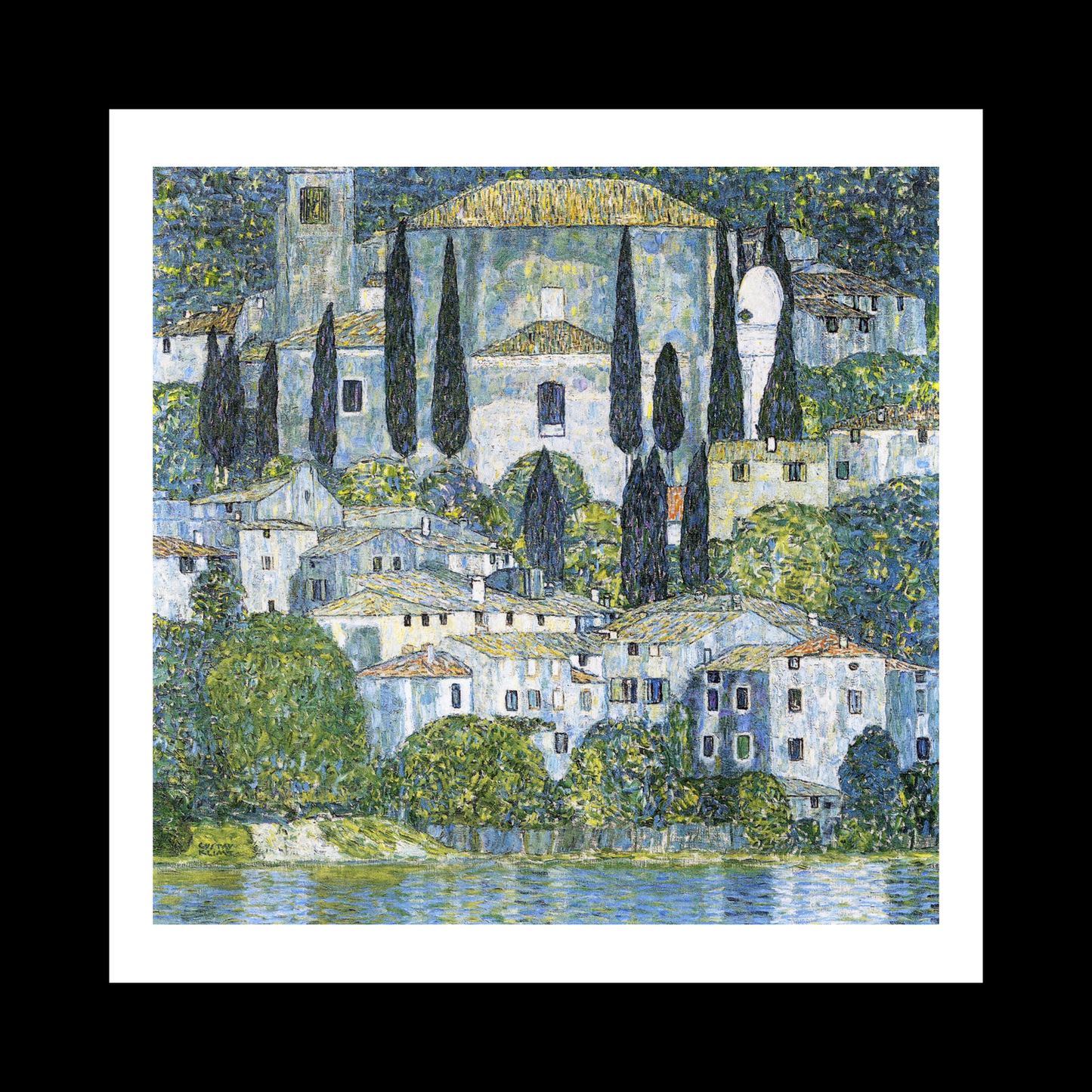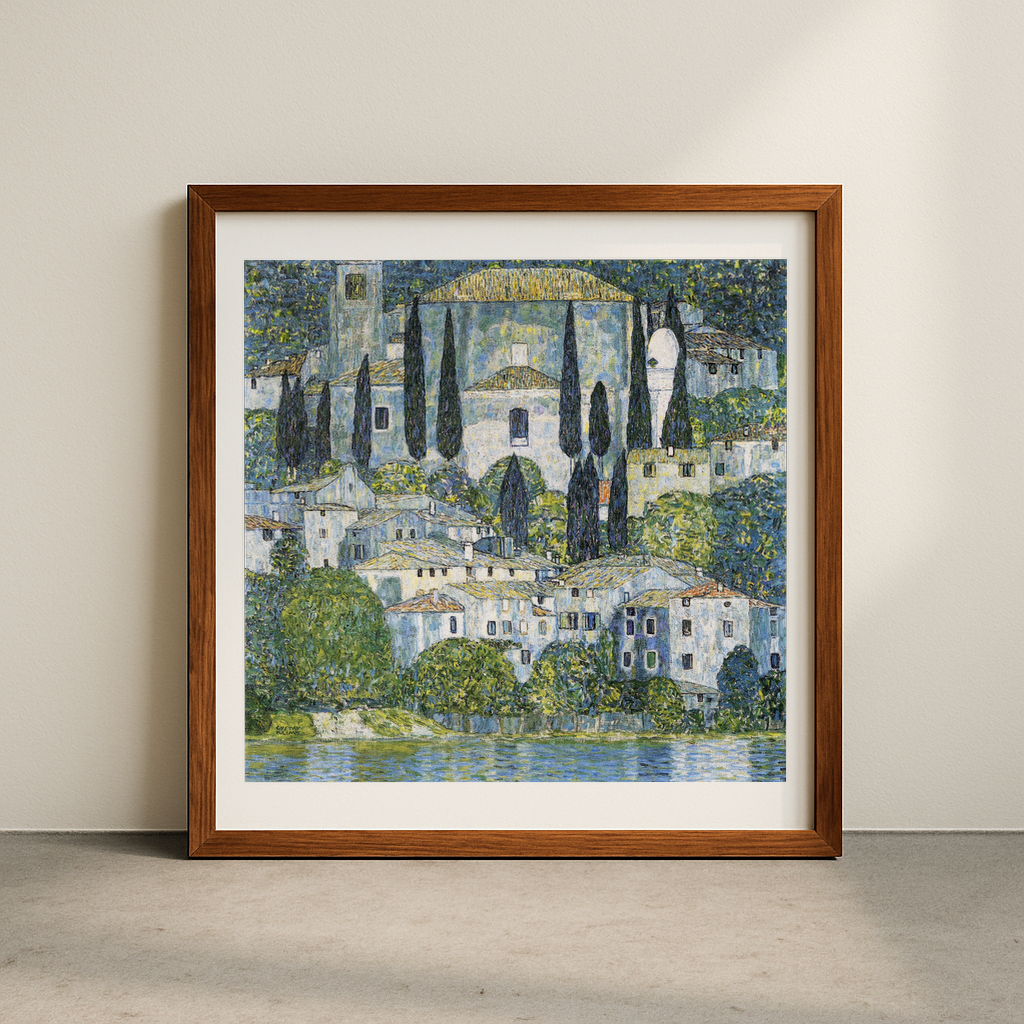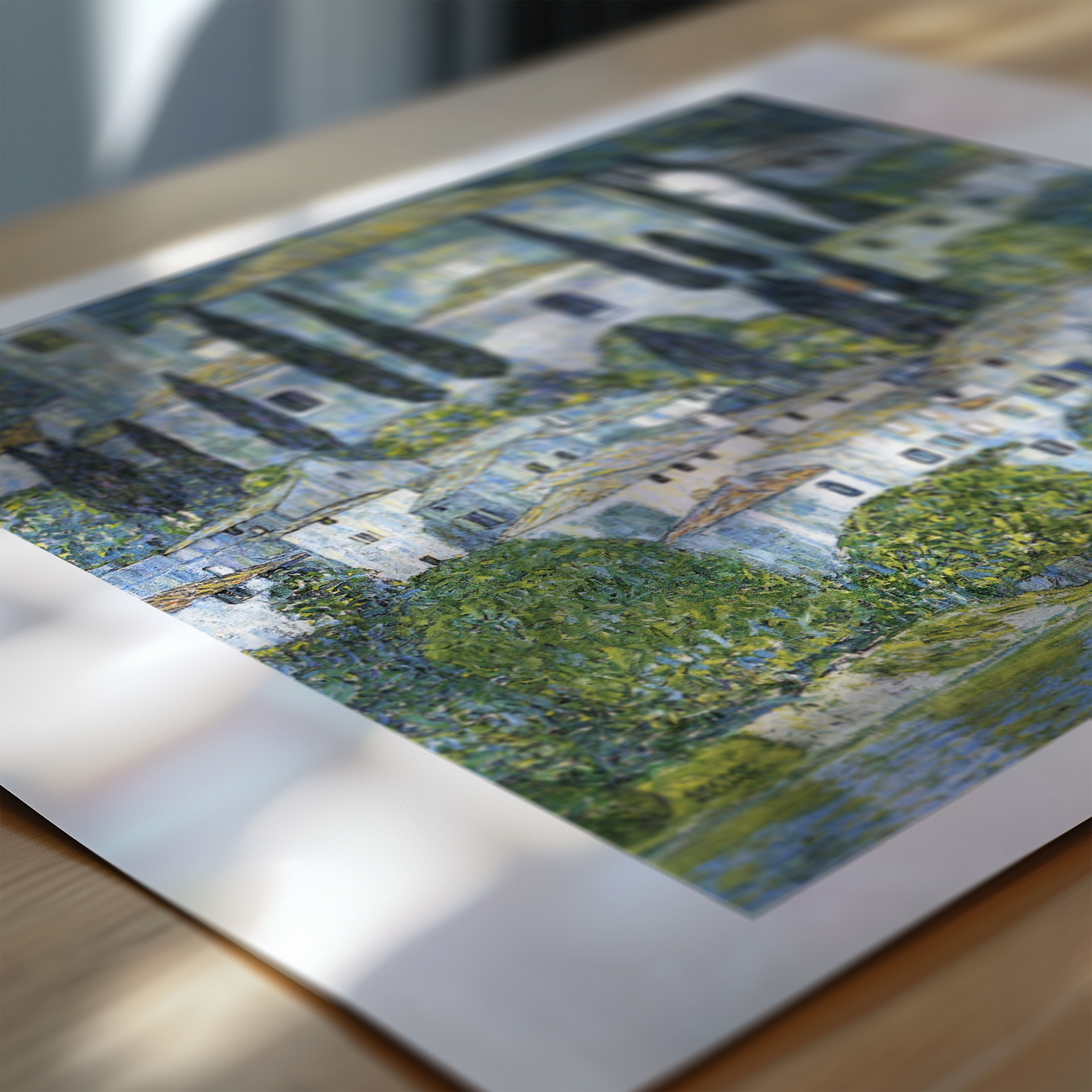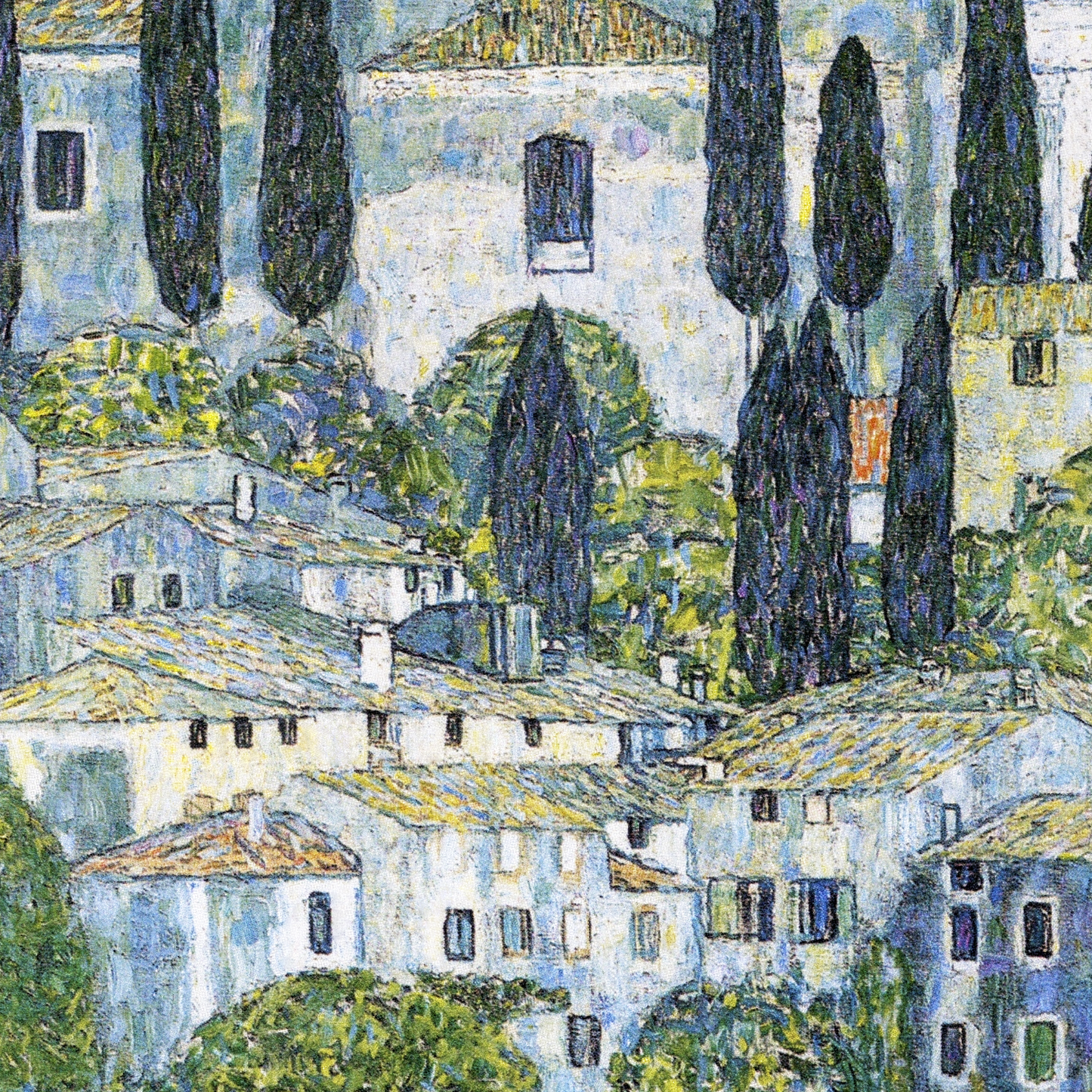1
/
of
6
Kirche Cassone (1913)
Kirche Cassone (1913)
Regular price
£12.45 GBP
Regular price
Sale price
£12.45 GBP
Taxes included.
Quantity
Couldn't load pickup availability
Kirche in Cassone (Church in Cassone) showcases Gustav Klimt's distinctive post-impressionist style during his later years, depicting a sun-drenched Italian church perched along Lake Garda. The painting exemplifies Klimt's evolution from his earlier 'Golden Period', embracing a more modernist approach with vibrant colours and mosaic-like brushwork. The vertical composition draws the eye upward from the tranquil waters to the majestic church, while the surrounding cypress trees create a natural frame that emphasises the building's architectural presence.
Created during Klimt's visit to Lake Garda in 1913, this work reflects a significant shift in his artistic focus, moving away from his well-known portraits of Viennese society to explore landscape painting with renewed enthusiasm. The piece captures the Mediterranean light and atmosphere of Northern Italy, demonstrating Klimt's masterful handling of colour and his ability to transform ordinary scenes into extraordinary visual experiences. The church, rendered in his characteristic pointillist technique, seems to shimmer against the backdrop of mountains and sky.
The painting holds particular significance as it represents Klimt's fascination with Italian architecture and his deep appreciation for the country's natural beauty. His choice to paint this specific church, nestled in the small village of Cassone, reveals his interest in capturing intimate moments of everyday life rather than grand religious statements. The work's composition, with its carefully balanced elements and luminous quality, demonstrates Klimt's ability to merge architectural precision with atmospheric effect, creating a harmonious blend of structure and nature that continues to captivate viewers today.
View full details
Created during Klimt's visit to Lake Garda in 1913, this work reflects a significant shift in his artistic focus, moving away from his well-known portraits of Viennese society to explore landscape painting with renewed enthusiasm. The piece captures the Mediterranean light and atmosphere of Northern Italy, demonstrating Klimt's masterful handling of colour and his ability to transform ordinary scenes into extraordinary visual experiences. The church, rendered in his characteristic pointillist technique, seems to shimmer against the backdrop of mountains and sky.
The painting holds particular significance as it represents Klimt's fascination with Italian architecture and his deep appreciation for the country's natural beauty. His choice to paint this specific church, nestled in the small village of Cassone, reveals his interest in capturing intimate moments of everyday life rather than grand religious statements. The work's composition, with its carefully balanced elements and luminous quality, demonstrates Klimt's ability to merge architectural precision with atmospheric effect, creating a harmonious blend of structure and nature that continues to captivate viewers today.
